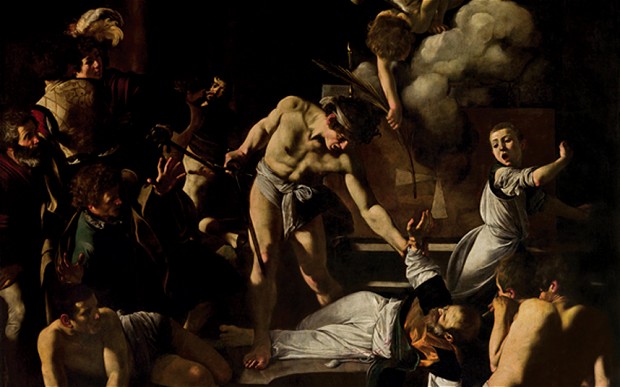
Italian art historians claim they have found 100 previously unknown works by Caravaggio, one of the giants of the Renaissance. Caravaggio paintings discovered by two ambitious hard working Italian art historians.
Milan / NationalTurk – Caravaggio paintings were found in a Simone Peterzano workshop among a collection of paintings and drawings which has been held in a castle in Milan, Castello Sforzesco, since 1924, after the priceless works were transferred there from a nearby church. Caravaggio had been one of the many pupils tutored by Peterzano from 1584 to 1588. Castello Sforzesco is a Milan landmark.
Two Italian art historians claims rock the art society across the world. They say they have discovered as many as 100 works, most of them drawings, by a very young Caravaggio in a collection long attributed to a master Milanese artist he studied under while he was a boy in the late 1500s.
Caravaggio paintings : Elusive pices of art discovered in Italy
Italian art historians and experts had considered the Peterzano collection contained only works by Peterzano until today.
Italian art experts mention that after two years of rigorous analysis, they had discovered ‘ remarkable similarities ‘ between the newly-discovered works, kept in a castle in Milan, and the known works of Caravaggio.
The Caravaggio vigiled sketches and paintings, if proved to be authentic, would be worth an estimated 700 million euros.
But the declaration of the shocking discovery of Caravaggio paintings came out of the blue, stirred an immediate havoc in the art world society and raised as many questions as it answered at the same time. Evaluatation of the claims by Maurizio Bernardelli Curuz and Adriana Conconi Fedrigolli on the eve of the publication of two ebooks laying out their case was not immediately possible.
Secret research for Caravaggio paintings
The historians apparently managed to keep their research for elusive Caravaggio paintings a secret for two years, but on Friday their discovery will be published in a lavish, two-volume, 600-page e-book in four languages. Italian news agency ANSA states the historians spent two years poring through the collection. They used a computer to study similarities between details in some of the art school drawings with details in paintings by Caravaggio decades later. A website promoting the ebook says 83 of these drawings contain details strikingly identical to those in works of the mature artist.
But one expert familiar with the collection said it was unlikely that more than a few at most were actually done by Caravaggio and that none show the mature hand of the temperamental artist – famed for his dramatic chiaroscuro effect of dark space contrasting with light, vivid still life and the then-scandalous use of models from the lower walks of life for religious scenes.
The findings of Caravaggio paintings : Sceptical claims
Claudio Strinati, a prominent expert in 16th-century art, notes the claim that some 100 works in the collection were actually done by Caravaggio, born in 1573 as Michelangelo Merisi, was ‘ completely absurd ‘. ‘ If you consider that Peterzano had so many pupils, there were probably 50,000 drawings,’ most of them likely thrown away, Strinati mentioned. ‘ No-one knows which were done by the pupils.’
Caravaggio Biography : Death of the virgin is an inspiration for artist since centuries
Caravaggio was born as Michelangelo Merisi in Italy around 1571. He was orphaned at age 11 and apprenticed with Peterzanı, a painter in Milan. He moved to Rome, where his work became popular for the tenebrism technique he used, which used shadow to emphasize lighter areas. His career, however, was short-lived. Caravaggio killed a man during a brawl and fled Rome. He died not long after, on July 18, 1610.
Caravaggio, whose fiery masterpieces included ‘ The Death of the Virgin ‘ and ‘ David with the Head of Goliath,’ and who inspired generations of artists arrived a violent and unstable world. His birth came just a week before the Battle of Lepanto, a bloody conflict in which Turkish invaders were driven out of Christendom.
Caravaggio’s novelty was a radical naturalism that combined close physical observation with a dramatic, even theatrical, use of chiaroscuro. Later called as Tenebrism, the shift from light to dark with little intermediate value, inspired generations of artists. He burst upon the Rome art scene in 1600 with the success of his first public commissions, the Martyrdom of Saint Matthew and Calling of Saint Matthew two of most known Caravaggio paintings. Thereafter Caravaggio never lacked commissions or patrons, yet he handled his success atrociously. Caravaggio was jailed on several occasions, vandalized his own apartment, and ultimately had a death warrant issued for him by the Pope in Vatican.
[adrotate banner=”48″]